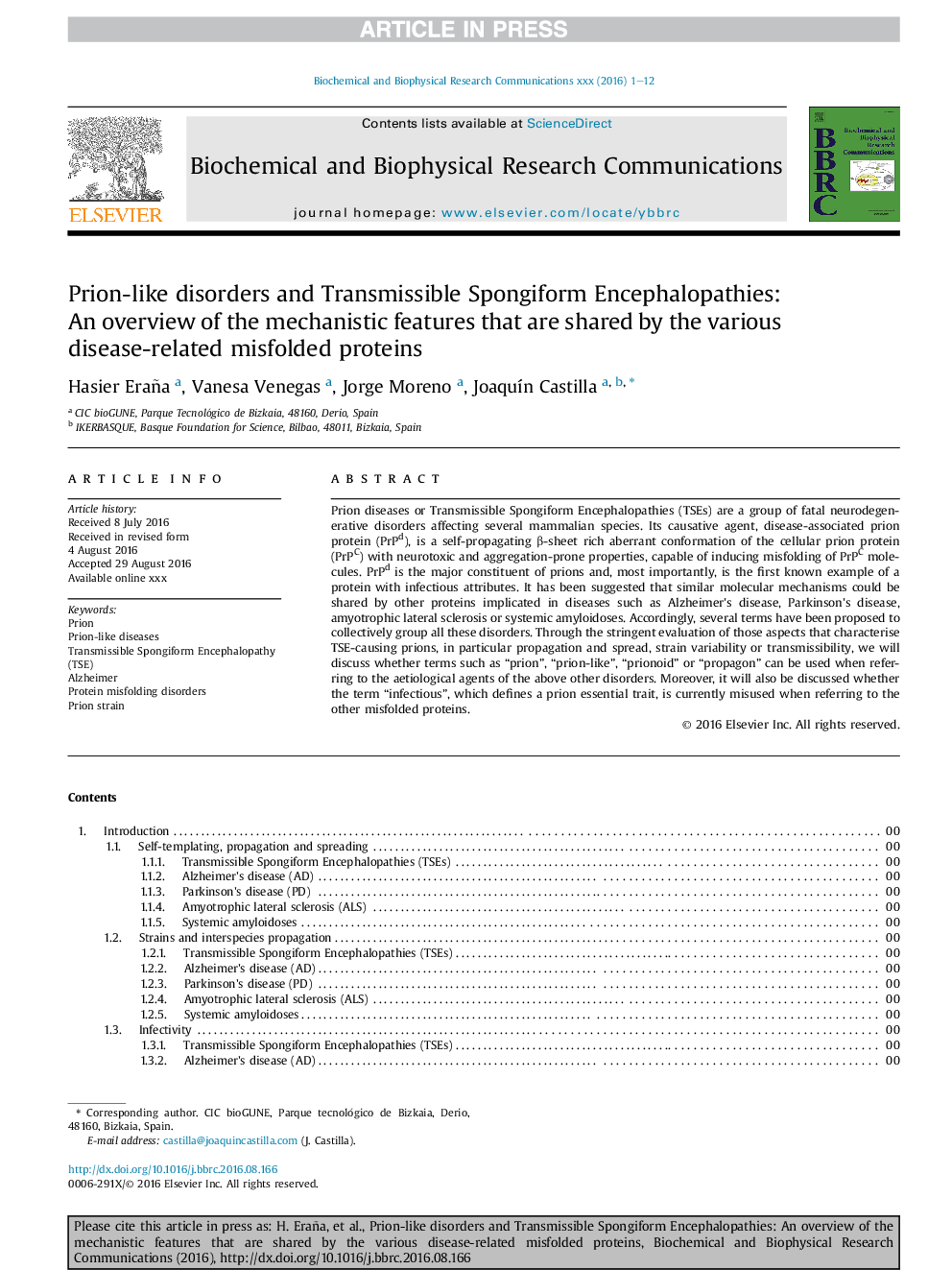| Article ID | Journal | Published Year | Pages | File Type |
|---|---|---|---|---|
| 5506429 | Biochemical and Biophysical Research Communications | 2017 | 12 Pages |
Abstract
Prion diseases or Transmissible Spongiform Encephalopathies (TSEs) are a group of fatal neurodegenerative disorders affecting several mammalian species. Its causative agent, disease-associated prion protein (PrPd), is a self-propagating β-sheet rich aberrant conformation of the cellular prion protein (PrPC) with neurotoxic and aggregation-prone properties, capable of inducing misfolding of PrPC molecules. PrPd is the major constituent of prions and, most importantly, is the first known example of a protein with infectious attributes. It has been suggested that similar molecular mechanisms could be shared by other proteins implicated in diseases such as Alzheimer's disease, Parkinson's disease, amyotrophic lateral sclerosis or systemic amyloidoses. Accordingly, several terms have been proposed to collectively group all these disorders. Through the stringent evaluation of those aspects that characterise TSE-causing prions, in particular propagation and spread, strain variability or transmissibility, we will discuss whether terms such as “prion”, “prion-like”, “prionoid” or “propagon” can be used when referring to the aetiological agents of the above other disorders. Moreover, it will also be discussed whether the term “infectious”, which defines a prion essential trait, is currently misused when referring to the other misfolded proteins.
Related Topics
Life Sciences
Biochemistry, Genetics and Molecular Biology
Biochemistry
Authors
Hasier Eraña, Vanesa Venegas, Jorge Moreno, JoaquÃn Castilla,
